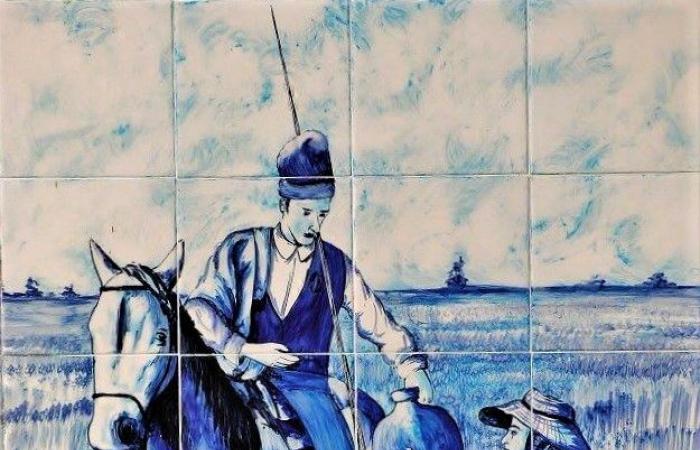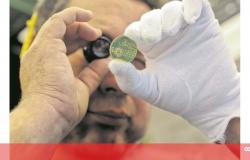Running until next Sunday, April 28th, in the very typical village of Azinhaga do Ribatejo, the 1st Campino Festival, an event that has full justification in a land where so many illustrious campinos were born, lived and worked, that in the agricultural houses of the municipality of Golegã and others in our Ribatejo, served with work, effort and talent some of the most important national cattle ranches, shining on horseback in herding wild cattle and driving fighting bulls on the way to the squares.
The experience of Campino in the past was very difficult, painful and risky, something that does not always show in his gallant and manly presence at the festivals and fairs where he participates on behalf of the Casa Agrícola which he serves with the greatest commitment and dedication. There, at a time of celebration, Campino, wearing his beautiful attire, radiates joy from every pore, but, in the solitude of the marshland where he went on a packed lunch for a week or more, on the freezing and rainy nights of winter, Campino was a demure, calm and peaceful figure.
Throughout the year the “moiral” of bulls always had work to do, from weaning the calves, separating them from their mothers, shoeing, stalling, changing pastures, driving them to the squares “by horse’s claw”. , especially when it was still not easy to transport them in trucks, and then the return to the House, where some of the most powerful were used for the yoke, after a risky job of grooming. Other times, when camping involved so much toil…
But, as it is impossible to cover all of Campino’s work now, let’s talk a little about his unique and unique way of dressing.
There is no doubt that the Ribatejo campino’s formal attire lives up to the adjective of “the most elegant male attire in Portuguese popular clothing”. If the costumes of the Viennese butlers stand out on the level of women’s attire, that of the peasants pontificates at the level of the Portuguese man’s attire.
However, this costume contains within itself a set of singularities and mistakes, which well justify an approach to its history and use.
The owners of the large agricultural houses in Ribatejo were in many cases members of some of the families of the national aristocracy, people who spent long periods in the capital of the kingdom, conquered by the charms of a mundane life, who were unable to live with the same intensity and with the same brilliance in his lands at Borda-d’água.
From the udders of the Ribatejo plains, entrusted to the management of some foreman or leased to various foreiros, they received the subsistence for a rich and lavish experience, which was necessary to enhance some prestige resulting from the parchments of family ancestry or the fame of its production.
The existence of a wild cattle ranch was one of the ways to achieve greater notoriety, as the origin of the cattle fought in the bullfight was always referred to, and, of course, when the bulls invested to the satisfaction of the bullfighters and to the delight of the populace, the farmer did not fit. so happy in yourself.
When the illustrious family came to spend some time in the country, the servants who served at home accompanied them, as when the royal family came to the province, accompanied by their entourage. In the case of farmers with wild livestock, it was important to dress the peasants in uniform, as if they were field servants, by analogy with domestic servants.
And it was from this time onwards that the campinos began to wear a formal suit consisting of buckled farm shorts, a white embroidered shirt, a double-breasted red vest with two rows of metal buttons, white cotton socks and a jacket in the same color as their shorts. To maintain the relationship with the rural costume, there was the green cap with red cap, the red belt and the shelf shoes, where they applied the spurs when the tasks required it.
Now, this attire was very different from the attire worn on a day-to-day basis, which consisted only of straight, high-waisted cotim trousers, a striped shirt in dark fabric, a vest of the same fabric with a single order of buttons, a thicker jacket, to face the cold, in his time, and some wool boots.
Contrary to what many good people think, the campino dress costume was only used in very special circumstances for the life of the farmer’s family, and, naturally, under his orders, transmitted to the overseer or the abegão.
When the day of the try or the ferra was marked, on the day of the bullfight in which bulls from their border were fought, at festivals or fairs where the Casa Agrícola was represented, or at wedding parties or the christening of a member of the family, there ordered the Master “who wanted the servants in uniform”.
Just like that, without taking it off or putting it on, since that outfit was actually a uniform, the property of the Farmer, who entrusted it to the countryside on St. Michael’s day, when it was adjusted to that Agricultural House for a period of one year.
According to tradition, the campinos were fair from S. Miguel one year to S. Miguel the following year, but what is true is that if serious situations did not occur when fulfilling their obligations, the bond remained for life, passing from generation to generation. Son of an abegão, being a brave campino and respected by his peers, he would have every chance of replacing his father, when old age or illness prevented him from carrying out the task.
This costume, which, strictly speaking, is the only one that in Portuguese popular clothing can be classified as a uniform, is beautiful, elegant, showy, which is why many Ribatejo folkloric groups include it in their ethnographic framework, which will be correct if the circumstances are respected. in which it was used, and not, as we have seen so often, in an amount truly out of step with the reality represented.






